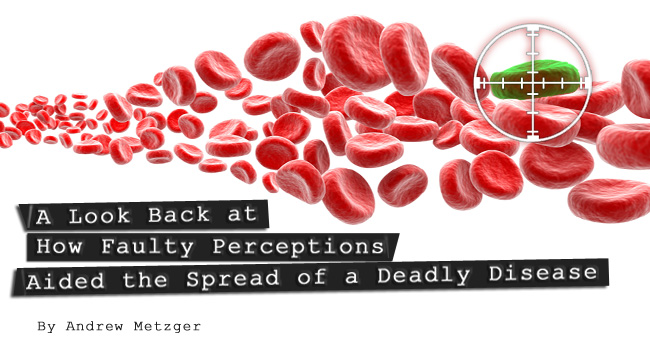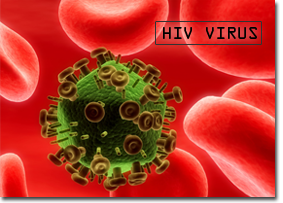A Look Back at How Faulty Perceptions Aided the Spread of a Deadly Disease

 The STS Bloodborne Pathogens course focuses on three very dangerous and pervasive viruses – the hepatitis B virus (H-B-V), the hepatitis C virus (H-C-V) and the human immunodeficiency virus (H-I-V). All three are pathogens of great concern in the modern world. Due to its somewhat unique history, I have chosen to focus on the H–I-V virus in this blog.
The STS Bloodborne Pathogens course focuses on three very dangerous and pervasive viruses – the hepatitis B virus (H-B-V), the hepatitis C virus (H-C-V) and the human immunodeficiency virus (H-I-V). All three are pathogens of great concern in the modern world. Due to its somewhat unique history, I have chosen to focus on the H–I-V virus in this blog.
I’m old enough to remember when the initial odd fragments pertaining to H-I-V and the disease it causes – Acquired Immunodeficiency Syndrome (AIDS) — began appearing on the news. It was 1981 and the first U.S. deaths attributed to the baffling disorder were recorded in Los Angeles. These victims, and the ones that followed, died because their immune systems stopped working. Unfortunately for purposes of public perception, most of these early victims were members of the male gay community.
By 1983, it was clear that the disease was being caused by a retrovirus that would come to be known as H-I-V. However, because of the particular social matrix of 1980s America, far too much attention was focused on the fact that the disease was prevalent in the gay community. For the most part, mainstream Americans believed they were safe from this “gay disease,” but mainstream Americans were tragically wrong and this misconception curtailed what should have been a swift and efficient adoption of the safety procedures that might have blunted the spread of AIDS.
H-I-V wasn’t and isn’t a “gay disease,” it’s a bloodborne pathogen, spread, as with all bloodborne pathogens, through the transmission of microorganisms from one person’s bloodstream to another’s. It’s so obvious now, but I’ll never forget how “unobvious” it seemed to millions of Americans back in the 1980s.
The perception didn’t change until the disease started rearing its ugly head everywhere; until people saw it ravaging heterosexuals as well has homosexuals, women as well as men, old as well as young. I’ll never forget the speech delivered by Mary Fisher at the 1992 Republican National Convention. This prominent, attractive young heterosexual woman had AIDS. She also had a powerful message, the essence of which is embodied in this excerpt:
“This is not a distant threat. It is a present danger. The rate of infection is increasing fastest among women and children. Largely unknown a decade ago, AIDS is the third leading killer of young adult Americans today. But it won’t be third for long, because unlike other diseases, this one travels. Adolescents don’t give each other cancer or heart disease because they believe they are in love, but HIV is different; and we have helped it along. We have killed each other with our ignorance, our prejudice, and our silence. We may take refuge in our stereotypes, but we cannot hide there long, because HIV asks only one thing of those it attacks. Are you human?
It was a wake-up call to Americans and marked the beginning of a stronger push toward viewing AIDS as an issue that could be boiled down to one thing – a specific bloodborne pathogen called H-I-V that could infect anyone if it found its way into his or her bloodstream. It was a matter of education about the true nature of the enemy, and about the safety precautions to which everyone should adhere to see to it that this or any other such pathogen doesn’t infect them.
Enter, STS and its Bloodborne Pathogens course aimed at improving safety in the workplace. However, the principles contained in this course represent prudent procedures for anyone, anywhere. As always with a course that has received the STS stamp of approval, the protocols here are rock solid. With dangerous retroviruses like H-I-V, H-B-V or H-C-V, the best cure is always prevention!
Andrew Metzger
Guest blogger
School Training Solutions
| Discounted Courses: Bloodborne Pathogens (2 Hours) Discounted Price: This course describes bloodborne pathogens and defines associated terminology. It also discusses signs, symptoms, and treatments of the most commonly encountered bloodborne diseases, their methods of transmission, ways to prevent exposure to bloodborne pathogens, and beneficial actions following any incidental exposure. Discounted Price: This course describes historical background and general statistics of HIV/AIDS. It describes HIV/AIDS methods of transmission, symptoms, and treatment options. Techniques for prevention and legal issues pertaining to HIV/AIDS are also identified. |


